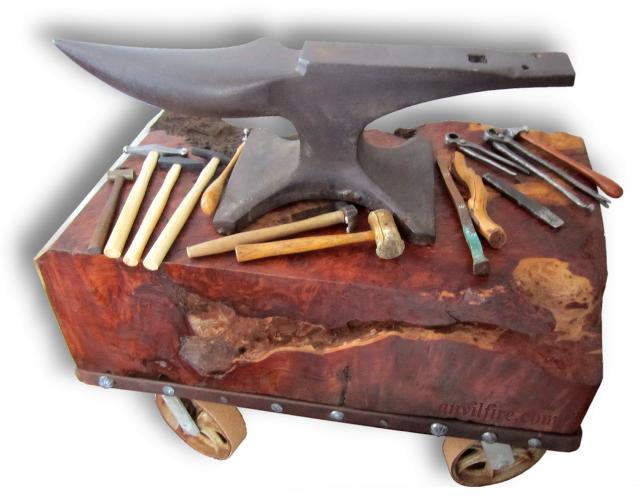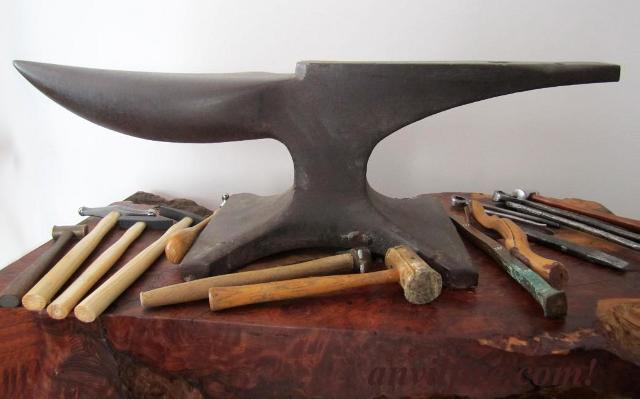Photos by Teresa Lamb, San Diego, California, USA
Anvils have been an artistic sculptural shape since the Bronze Age.
While much of the design is derived from "form follows function" the shape that supports and connects the work surfaces make them sculpture in every sense.
They exemplify symmetry and balance, gracefulness of line as well as engineering function.
They are both a tool that takes great abuse and works of art that are collected for their uniqueness and beauty.
To a blacksmith the farrier's anvil is a bizarre characture of an anvil.
A cartoon in metal. But one cannot deny the art.
The American Farrier's anvil was developed about 1960 at the time the traditional blacksmith shop had faded from existence and before the renaissance in American blacksmithing as an art a decade later.
It was designed as a special purpose tool to fit factory made horseshoes and to do light forging of same.
It was made to be very light weight (a portable anvil) because the modern farrier travel by truck, going to the horses rather than the horses coming to the farrier.
Despite the requirement to be light it also needed the work surfaces sized for the job.

Farrier anvil on redwood burl stand in artist's studio.
Farrier's anvils had existed much earlier than 1960 but as modified general shop forging anvil.
In fact the familiar modern English/American anvil with long horn, thin heel and small pritchell hole takes these features from the need to make horseshoes by the thousands.
But as a multipurpose tool they retained a much heavier waist and proportionately heavier features.
Those designed primarily for forging had bodies nearly as long as the working face and no "waist" at all.
In the late 1800's the majority of anvil designs displayed how important shoeing was to the horse drawn economy.
The Peter Wright design was followed by the slightly more extreme American design by Hay-Budden and other American manufacturers.
However, while bowing to the transportation needs of the day these were still fairly heavy pattern anvils suitable for general forging.
The earliest specialty farriers anvils of the early 1900's were standard anvils with an extra pritchell hole and the horn modified.
But these were relatively rare.
The owner was told this anvil was 50 years old, having purchased it from the family of the original owner.
That makes it one the earliest of American Farrier pattern anvils.
 Two Farriers' Anvils
Two Farriers' Anvils
Two modern horseshoer's anvils. One from the Oklahoma Horseshoer's School and one unmarked.
 Queen City Steel Farriers' Anvil
Queen City Steel Farriers' Anvil
Rare anvil made by Kohlswa contracted through Centaur Forge.

Boxed Farrier Anvil Pattern
Mold box mounted pattern seen at SOFA QuadState in 2005.
Includes definitions of foundry pattern types.








städ, incus, aambeeld, batente